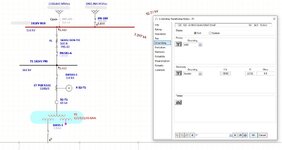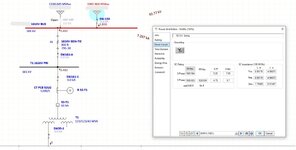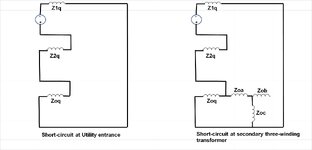Hello everyone, my first post here.
I was modelling a power system that has the following fault utility source contribution values:
3LG fault: 7050A at X/R = 5.25
1LG fault: 5700A at X/R = 4.73
When trying to fault the main bus connected directly to the utility, I get a Line-to-Ground fault current value above 7kA which is higher than the utility’s contribution. There is a 3-winding stepdown transformer (Yn-D-Yn) downstream, and I've disconnected everything else downstream beyond that transformer.
Can anyone please help me get clarity on and understand why the L-G values are appearing higher than the utility contribution values on that main bus? Is the transformer playing a role in this? Not sure what I'm missing here and seeking some help to better understand this.
Attaching some model screenshots for a visual reference.
Thank you.
I was modelling a power system that has the following fault utility source contribution values:
3LG fault: 7050A at X/R = 5.25
1LG fault: 5700A at X/R = 4.73
When trying to fault the main bus connected directly to the utility, I get a Line-to-Ground fault current value above 7kA which is higher than the utility’s contribution. There is a 3-winding stepdown transformer (Yn-D-Yn) downstream, and I've disconnected everything else downstream beyond that transformer.
Can anyone please help me get clarity on and understand why the L-G values are appearing higher than the utility contribution values on that main bus? Is the transformer playing a role in this? Not sure what I'm missing here and seeking some help to better understand this.
Attaching some model screenshots for a visual reference.
Thank you.



